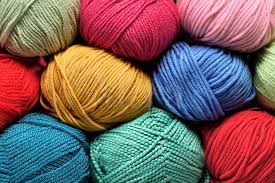Chemical Properties Of Wool – What You Ought To Know

Various properties of wool play a vital role in its performance as a fine winter wear. Moreover, you can always select the best fit depending upon a seamless match with your needs. Buying jackets for girls online is simple; however, you need to take care of it to enjoy the goodness for the years to come. Therefore, understand how your jacket responds to chemicals and various other factors to get the best from them. Well, it is your hard-earned money and it matters the most. Taking care of woolens is simple when you know what to do and about things to avoid.
Chemical Properties Of Wool
Wool fibers obtained from sheep have protein content. It responds to various household chemicals in a peculiar manner. Moreover, selecting a right approach to tending care for woolen jackets solely depend upon its type and responsiveness. Here are a few properties of wool that matter the most
- Response to Acids – Wool fiber dynamically responds to acids. In fact, it decomposes completely in strong acids. For an example, a piece of woolen fabric kept in sulphuric acid dissolves completely after some time. However, wool offers excellent resistance to mineral acids of all strengths. Nitric acid is known to cause oxidation of wool fibers. Therefore, it is strongly advisable to avoid any fabric cleaner with acidic content during washing woolen jackets. However, surprisingly, mild or diluted acids are used in treatment of the wool to improve quality or separate vegetable matter from the raw wool.
- Response to Alkalis – Wool keratin is highly vulnerable for damage when exposed to alkali substances. Wool dissolves in caustic soda. Whereas, cotton does not dissolves in caustic soda. Therefore, make sure that your detergent is free from caustic soda and similar alkali substances. Washing woolens with detergents containing high caustic soda levels certainly damages it, although it is a proven method of getting cottons clean effectively.
- Response to organic Solvents – Wool remains unaffected when treated with organic solvents. These solvents are often used during various processing methods of raw wool.
- Dyeing – Wool responds fantastically to various dyeing and coloring methods. The pigments of the dye are absorbed on the cellular level offering lasting results. However, acid wash is known to cause discoloration. Extreme exposure to sunlight is also known to induce discoloration as overexposure generates sulphuric acid, which in turn caused decomposition of the wool as well as discoloration.
- Microorganisms and Insects – Wool is severely affected by insects as insects like moth feed directly on wool keratin. Prolonged wet wool harbors mildew. Therefore, it is strongly recommended to store it safely away from the insects and ensure that it never soaks in water for long.
Chemical properties of wool and its responsiveness with various chemicals, insects, and microorganisms truly govern the way you need to care. Following washing instructions, avoiding exposure to acids and alkalis, and taking appropriate care help to keep woolens smiling forever. This also helps you to keep your kids warm and toasty just the way you need during the winter.






Leave a Reply